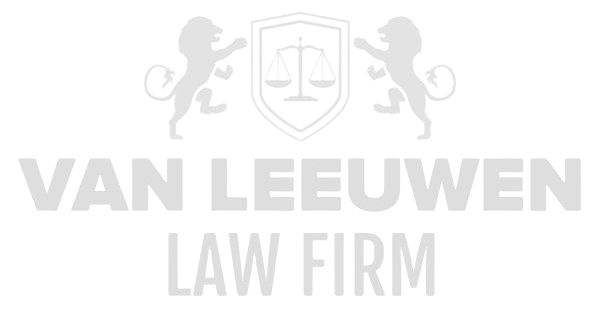Financial and Economic Crime increasingly poses a stealthy and destructive threat to organizations, institutions, and governments worldwide. In an era where digital infrastructures form the backbone of economic transactions, strategic decision-making, and operational processes, this form of crime has acquired a new dimension. No longer is one solely dependent on physical documents, handwritten bookkeeping, or face-to-face meetings. Crime has shifted to the digital arena, where speed, anonymity, and scalability go hand in hand with advanced technologies and artificial intelligence. Money laundering, tax evasion, corruption, terrorism financing, and fraudulent trade transactions are no longer isolated incidents but widespread and structural threats that penetrate deeply into the financial core of society. This type of crime is as elusive as it is ruthless: seemingly legal transactions and networks are exploited to conceal illegal flows of capital, launder black money, and undermine the foundations of the financial legal order.
In this legal and economic battlefield, organizations must arm themselves not only against the tangible risks of loss and sanctions but also against the barely measurable damage to reputation, trust, and legitimacy. The increased reliance on digital systems, combined with the exponential rise in cross-border transactions, has created fertile ground for actors operating outside the boundaries of ethics, regulation, and transparency. Financial and Economic Crime is essentially an attack on the legal and institutional fabric that holds a society together. It is a silent war, fought in datasets, on servers, via crypto wallets, and in opaque structures of offshore companies. There, in those digital and legal shadow zones, a continuous clash takes place between right and wrong, between control and chaos, between the state and the subversive forces that seek to undermine it.
The Nature and Metamorphosis of Financial and Economic Crime
Financial and Economic Crime is by nature highly adaptive and camouflaging. Whereas traditional crime is often characterized by direct, visible acts—such as theft, burglary, or physical fraud—financial-economic crime is usually complex, layered, and insidious. It manifests itself through apparently legitimate structures: banks, corporations, fiscal constructions, and digital payment systems. This apparent legality makes detection and prosecution especially difficult. The perpetrator hides behind layers of legal fiction, intermediaries, shell companies, and automated processes. There is a continuous metamorphosis: as soon as a certain modus operandi is recognized by regulators or legislators, the crime evolves and adapts. Just like a virus mutates to evade detection by the immune system, financial-economic crime transforms to bypass detection barriers.
The strategies employed by criminals are sophisticated and international. Companies are established in jurisdictions with lax regulatory environments, where transparency requirements are minimal and where banking secrecy still functions as a de facto obstacle to international cooperation. Subsequently, money flows are moved through complex networks of accounts, investments, and derivatives—transactions that are often legal on their own but reveal a pattern of abuse when viewed in context. This phenomenon, known as “layering,” aims to render the origin of money unrecognizable, making detection nearly impossible. At the same time, digital innovations such as cryptocurrencies and DeFi platforms are used to ensure the anonymity of perpetrators and to circumvent the control mechanisms of banks and regulators.
Against this backdrop, it becomes clear that financial and economic crime is not a marginal problem but a structural phenomenon embedded at the heart of economic traffic. Its complexity, transnational character, and digitalization mean that traditional investigative methods fall short. Criminal networks operate without borders, while law enforcement agencies are constrained by national jurisdictions and formal procedures. The criminal world has adapted to globalization and the technological revolution, while the legal apparatus struggles with outdated definitions and cumbersome procedures. This asymmetry poses a fundamental problem for the enforcement of the rule of law and integrity.
Money Laundering as a Strategic Weapon and Structural Abuse Mechanism
Money laundering is not merely a byproduct of criminal activity but a strategic weapon used to legalize illegally obtained assets and deploy them for ostensibly legitimate purposes. The process proceeds through three classical stages: placement, layering, and integration. In the placement stage, illicit money is introduced into the financial system. Then, in the layering phase, it is passed through a series of transactions intended to obscure its origin. In the final integration stage, the money is made available again to the perpetrator, but now in an apparently legitimate form. Each of these phases is saturated with legal and digital complexity. The transactions are constructed such that they pass legal scrutiny under a veil of legitimacy.
What is remarkable about money laundering schemes is their exploitation of systems designed to uphold trust and stability. Banks, notaries, tax advisors, and lawyers are—sometimes knowingly, sometimes unknowingly—used as links in the laundering cycle. Criminals capitalize on their access to financial networks and their status as ‘gatekeepers.’ By leveraging professional service providers, criminals lend an aura of legitimacy to their operations. As a result, not only is criminal capital recycled, but societal trust in these professions and institutions is also undermined.
In the digital context, money laundering has received a new impetus. Cryptocurrencies enable the transfer of large sums of money without central intermediaries. Transactions on blockchain platforms are pseudonymous, severely hampering traceability. Additionally, criminals use so-called mixers and tumblers—digital services that obfuscate the origin of crypto assets by mixing funds with other balances. This has led to a new type of laundering practice that not only disables classical control mechanisms but also raises the question of whether the existing legal framework is adequate for this digital reality.
Terrorism Financing: The Financial Veins of Ideological Terror
Terrorism financing is a manifestation of financial-economic crime that is not primarily aimed at financial gain but at facilitating ideological and political goals. It is the economic engine behind violence, intimidation, and destabilization. Although it may seem like a niche form of crime, its impact is all the more devastating. By monitoring and blocking funding flows, radical networks can be weakened and violent acts prevented. However, in practice, it proves extremely difficult to detect and block such money flows in time.
The financing structures of terrorist organizations are highly resilient. They often operate through legitimate front organizations, such as charities, cultural associations, or religious foundations. These entities receive donations that are then—whether knowingly or unknowingly—channeled to terrorist cells. A carefully structured system of financial camouflage is in place, deliberately blurring the line between legitimate and illegal. The legal protections afforded to charity and religious organizations pose an additional obstacle to oversight and enforcement.
Digitalization has also thoroughly reshuffled the cards here. Social media, crowdfunding platforms, and cryptocurrencies are used to anonymously raise funds for ideological purposes. Transactions occur across borders, without physical movement of funds, and in currencies that are difficult to trace. Thus, networks of financing arise that operate on the digital margins of the global financial system. The classical model of terrorism financing—with suitcases full of cash and informal hawala networks—has been replaced by a hypermodern, decentralized, and digital system that is hardly regulable with existing tools.
Tax Evasion: The Organized Subversion of Fiscal Justice
Tax evasion fundamentally undermines the public legal order and the principles of solidarity on which taxation is based. Unlike tax avoidance—which operates within the bounds of the law—tax evasion is by definition illegal. It involves the deliberate and secret concealment of income, assets, or transactions to avoid the payment of due taxes. This practice is not only a direct assault on the state treasury but also an erosion of the support base for the tax system as a whole. When individuals or companies systematically evade taxes, the burden shifts to the rest of society.
The mechanisms used to evade taxes are ingenious. They make use of complex international structures, such as mailbox companies, trusts, hybrid financial instruments, and internal transfer pricing. By shifting profits to jurisdictions with low or no tax pressure, multinational corporations and wealthy individuals succeed in significantly reducing their fiscal obligations. At the same time, these structures are legally designed such that the chance of detection is minimal, and legal liability is diffusely distributed across multiple entities and countries.
Digitalization has not only accelerated tax evasion but also enriched it with new possibilities. Crypto assets are used to keep wealth out of the tax authorities’ sight. The trade in NFTs, tokens, and digital assets adds a new dimension to wealth management, with transactions often occurring without traditional reporting obligations. All this makes tax evasion an elusive form of crime that nests in the shadow of the digital economy and only becomes fully visible during large leaks—such as the Panama Papers or Pandora Papers.
Corruption: The Systematic Erosion of Integrity Within Government Structures and the Private Sector
Corruption is the systematic erosion of integrity within government structures and the private sector. It represents a perverse symbiosis between the exercise of power and financial gain, where the interests of society are exchanged for the interests of a few. Whether it involves bribery, conflicts of interest, cronyism, or extortion — in all its forms, corruption undermines the legitimacy of governing institutions. Not only is the equality of citizens before the government compromised, but trust in the fairness of the state is also structurally damaged. What remains is a governance system where rules are flexible and power becomes a commodity to be bought and sold.
The financial mechanics behind corruption are sophisticated. Payments are routed through sham contracts, offshore accounts, or service intermediaries, carefully shielding the true beneficiary. Schemes are devised whereby corrupt money is disguised as consulting fees, fictitious loans, or bonuses. So-called independent intermediaries serve as buffers between the briber and the bribed, making detection particularly difficult. In the digital context, this complexity grows exponentially. Digital wallets, anonymous crypto transfers, and temporary email addresses create an infrastructure seemingly designed specifically to undermine transparency.
Corruption thrives in environments lacking oversight and abundant in discretion. In places where transparency is weak, supervision fragmented, and legal protection selective, a fertile ground for corrupt behavior emerges. Especially in government contracts, permits, tax exemptions, and public tenders, temptation is great and the chance of being caught low. On an international level, corruption is often intertwined with geopolitical interests. Governments building strategic infrastructure in fragile states are frequently accused of maintaining corrupt elites in exchange for access to resources or markets. Thus, corruption becomes not merely a criminal justice issue, but a fundamental challenge to the global rule of law.
Digital Vulnerability and Cyber Fraud as Vectors of Financial-Economic Threat
The rise of cybercrime has transformed the landscape of financial-economic crimes beyond recognition. Instead of physical break-ins or paper forgeries, organizations today face digital breaches, data exfiltration, and identity theft. Attacks occur via phishing, malware, ransomware, and social engineering, often not aimed at immediate theft but at gaining strategic control over systems or access to confidential information. The digital infrastructure has thus become not merely a means, but a target and battleground for economically motivated crime.
Cyber fraud is characterized by speed, anonymity, and scalability. Within seconds, millions of euros can be moved through hacked accounts or false payment orders. Fraudsters use fake companies, fraudulent invoices, and deepfake technology to impersonate executives or suppliers. In so-called CEO fraud, employees are convinced to make urgent payments to foreign accounts, allegedly on the instructions of senior management. Simultaneously, AI enables the imitation of credible communication, rendering traditional safeguards like voice recognition or writing patterns unreliable.
Vulnerability increases as organizations grow more dependent on digital processes and automated decision-making. A hacked email server, manipulated ERP system, or infected network can cause substantial financial damage and prolonged operational disruption. The lines between IT security and financial integrity have blurred: whoever controls the digital keys controls the financial system. Criminals exploit this by targeting the weakest link in the chain — often an unsuspecting employee or outdated software. In this respect, digital resilience is not just a technical issue, but a strategic necessity for fraud prevention.
Reputational Damage and Legal Liability Resulting from Negligence
Financial and Economic Crime causes not only direct financial losses but also profound reputational damage. In a society where transparency, social responsibility, and governance are central, involvement in a financial scandal is often fatal to public trust. Shareholders turn away, consumers seek alternatives, regulators intensify scrutiny, and partners sever contractual ties. Reputational damage is not only difficult to repair but also extraordinarily costly. What has been built up over years of goodwill can be destroyed in days by revelations of fraud, corruption, or money laundering.
The legal consequences are equally far-reaching. Directors can be held personally liable for culpable acts or omissions. The duty of care imposed on boards and supervisory bodies requires active monitoring of integrity and compliance. If investigations reveal ignored warning signs or neglected controls, gross negligence may be at issue. Liability also extends to shareholder disputes, criminal prosecution, and administrative sanctions. In serious cases, civil recovery claims may also arise against the company itself — for example, in the form of collective damage claims or recourse actions by insurers.
The legal and societal aftermath of a financial scandal is often prolonged. Forced restructurings, board replacements, fines, and remediation payments are just the beginning. Legal proceedings drag on, supervision tightens, and investors demand higher compliance standards. Even in cases of acquittal or dismissal, suspicion often lingers, as public judgment does not always conform to legal outcomes. Viewed in this light, prevention is not merely an operational choice but an existential necessity for any organization seeking to survive in a legally, socially, and economically demanding environment.
Regulation, Supervision, and the Limits of Legal Enforcement
The legal fight against Financial and Economic Crime is fundamentally an ongoing race between legislators, regulators, and offenders. New regulations, such as the European AMLD directives or the Dutch Act on the Prevention of Money Laundering and Terrorist Financing (Wwft), aim to increase transparency and strengthen gatekeepers. Yet the effectiveness of regulation depends on enforcement, interpretation, and compliance. Without robust capacities in investigative agencies, supervisors, and the judiciary, laws remain dead letters. Moreover, there is fragmentation of law: each jurisdiction applies its own definitions, standards, and procedures, complicating cooperation and fostering legal inequality.
Supervisors face the impossible task of real-time oversight over a constantly evolving criminal landscape. Banks, insurers, and financial institutions are expected to take their gatekeeping role seriously but complain about disproportionate burdens, unclear standards, and risks of sanctions for inadvertent errors. This tension leads to defensive compliance: overreporting, outsourcing customer investigations, and algorithmic risk assessments that exclude rather than include. The legal infrastructure — based on principles of proportionality, reasonableness, and legal certainty — clashes with the asymmetric nature of the threat it seeks to combat.
At the same time, questions arise about the effectiveness of criminal enforcement. Many cases fail due to lack of evidence, capacity, or priority. The complex international structures through which crimes are committed make jurisdictional claims, evidence collection, and prosecution difficult. A gray zone emerges where enforcement incapacity leads to de facto impunity. This fuels cynicism about the rule of law and confirms the perception that the powerful escape accountability. If the law cannot assert itself against organized financial-economic crime, it loses its moral authority — with all consequences that follow.
Complexity of Financial Products as a Catalyst for Abuse
The enormous increase in the complexity of financial products—ranging from derivatives to structured investment instruments and hybrid loans—has created an environment where transparency has been subordinated to yield, and comprehensibility has given way to fiscal and legal optimization. These products, although seemingly legitimate, often serve as shelters for fraudulent intentions in practice. Behind intricate term sheets, tax shields, and off-balance-sheet vehicles lie structures that not only obscure risk visibility but are also deliberately deployed to evade supervision, conceal capital flows, or dilute liability.
These financial innovations are increasingly being hijacked by actors with criminal intent. Whereas banks and asset managers once acted as gatekeepers, their role in some cases has shifted to that of service providers for clients with cross-border ambitions, reducing due diligence to a mere administrative exercise. The linear control mechanisms designed for conventional products fall seriously short when applied to complex derivatives or synthetic bonds. The entanglement of legal, fiscal, and banking structures makes it nearly impossible to determine with certainty who truly benefits from a transaction and what its actual purpose is.
The legal implications are far-reaching. Not only does this create room for regulatory evasion, but also for deliberately misleading investors, regulators, and partners. If the actual structure of a product is understood by only a handful of insiders, the question arises to what extent informed consent by investors or clients remains meaningful. These circumstances create a legal vacuum in which liability is diffuse and where the line between clever structuring and criminal deception has become razor-thin. Courts face the complex task of penetrating legal fictions and assigning responsibility within a system expressly designed to evade such attribution.
The Role of Trust Offices and Shadow Financing in Undermining Money Flows
Trust offices often form the hub of international financial constructions that appear legal at first glance but in reality serve as a cover for large-scale tax avoidance, money laundering, or asset concealment. They facilitate shell companies, manage legal entities across multiple jurisdictions, and provide administrative shielding of ultimate beneficial owners. Although this service formally falls within legal boundaries, in practice it is often used to obscure the origin of funds or evade oversight. Thus, trust structures represent a link between the legitimate and illegitimate worlds—a legal gray zone where the distinction between legality and illegality is structurally blurred.
A related issue is the phenomenon of shadow financing—the provision of loans, investments, or other forms of capital by unregulated entities, outside the scope of banking supervision. Private equity funds, hedge funds, and family offices often operate beyond the reach of regulatory oversight applicable to traditional banks, while accumulating and transferring substantial financial risks. These institutions are attractive to capital providers seeking anonymity or whose source of wealth is difficult to trace. The combination of high returns, low transparency, and global reach makes this sector particularly suitable for channeling criminal funds.
The legal risks are evident. Both trust offices and shadow banks perform gatekeeping roles without being subject to equivalent transparency obligations. This severely limits the possibilities for supervision, enforcement, and prosecution. Legal structures are deliberately spread across jurisdictions with minimal reporting requirements and weak enforcement, leading to a form of legal asymmetry from which criminals benefit. The rule of law thus loses ground to a parallel system of financial services in which rules are optional and supervision toothless. This raises the urgent question of recalibrating international legal instruments and strengthening cross-border legal cooperation.
Legal Normalization of Unethical Behavior at the Borderline of Legality
One of the most undermining aspects of Financial and Economic Crime is the gradual normalization of behavior that is morally reprehensible yet appears legally permissible. This borderline—where tax optimization crosses into tax evasion, where aggressive acquisition strategies verge on market manipulation, and where market information is selectively shared under the guise of due diligence—forms the breeding ground for institutional erosion. Lawyers, tax advisors, and compliance professionals are often complicit in institutionalizing behavior that, while respecting the letter of the law, systematically undermines its spirit.
This normalization is partly the result of the language used. Actions once labeled fraudulent are now described as ‘strategic,’ ‘innovative,’ or ‘fiscally attractive.’ Compliance has been reduced to a cost to be minimized rather than a framework protecting the foundations of the enterprise. Legal expertise is employed not to reinforce norms but to circumvent them. This culture of legality without justice creates an institutional environment where ethics are subordinate to efficiency, and where norm dilution has become the rule.
The consequences for the rule of law are severe. When citizens and businesses perceive that financial elites are systematically able to escape liability through legal tricks, the law loses its moral authority. The distinction between legitimate business practices and criminal behavior blurs, and public perception shifts toward cynicism and distrust. This undermines not only enforcement effectiveness but also the willingness of others to comply with rules. In this context, it is essential that lawyers, regulators, and judges reconsider their roles—not merely as enforcers of rules but as guardians of the legal order in its deepest meaning.
Digital Currencies and Crypto Assets: The New Frontier of Invisible Crime
The rise of digital currencies and cryptographic assets has added a new, highly complex dimension to the fight against Financial and Economic Crime. These technological innovations—originally introduced as decentralized alternatives to traditional financial systems—have now evolved into a parallel infrastructure in which anonymity and cross-border transferability are the norm. Criminal actors readily exploit the properties of blockchain technologies to move funds beyond the sight of banks, regulators, and law enforcement authorities. The speed, irreversibility, and pseudonymity of transactions make crypto assets particularly attractive for money laundering, fraud, ransomware payments, and tax evasion.
In practice, the explosive growth of cryptocurrencies has led to the creation of a so-called “shadow ecosystem” where exchanges, wallets, mixers, and DeFi protocols operate with a degree of autonomy and technical complexity that seriously undermines traditional control mechanisms. Regulatory frameworks remain largely national, while crypto naturally moves across borders. The legal grounding of crypto entities is diffuse, often deliberately oriented towards jurisdictions with permissive attitudes toward supervision and enforcement. Regulatory attempts—such as the European MiCA regulation—consistently lag behind the rapid emergence of new tokens, platforms, and products.
The legal challenges are immense. At the core lies the question whether traditional criminal law instruments are sufficiently equipped to address this new reality. What is the status of a private key in criminal law? Who is liable in a decentralized network without a central administrator? How is ownership proven on the blockchain? And how can pseudonymous transaction data be translated into evidence that holds up in criminal proceedings? Classical evidence law clashes head-on with technological realities here. The need for digital forensics, international cooperation, and specialized legislation is more urgent than ever—if law and crime are not to irrevocably drift apart in the digital domain.
International Sanction Regimes and the Backdoors of Geopolitical Evasion
International sanction regimes—often imposed by the United Nations, the European Union, or national governments—form a powerful tool in combating financial-economic misconduct, terrorism financing, human rights violations, and large-scale corruption. These sanctions aim to exert economic pressure on states, entities, or individuals who violate international norms. However, in practice, sanctions are widely circumvented, often through complex legal, banking, and logistical constructions. Shell companies, intermediaries, fake importers, alternative payment structures, and digital currencies are systematically used to undermine sanction regimes. These behaviors frequently lie at the intersection of criminal law, administrative law, and international law.
The problem is exacerbated by the fragmented legal nature of sanctions. National implementation differs by country, creating enforcement gaps. Multinational corporations face conflicting obligations and legal risks: on one hand, the threat of fines for non-compliance with sanctions, on the other, liability for unjustly refusing services to sanctioned parties. Furthermore, sanctions are regularly challenged through international arbitration or civil litigation for breach of contract, further muddying the legal playing field. The legal order is caught in a dilemma where geopolitical interests, economic dependencies, and legal norm-setting collide.
For the legal professional, this represents a paradigm shift: it is no longer sufficient to mechanically apply sanction lists or conduct standard due diligence. Rather, there is a need for in-depth geopolitical analysis, forensic auditing of supply chains, and a sharp understanding of extraterritorial laws such as the US OFAC regulations. Legal advisors must be not only legally and technically proficient but also geopolitically sensitive, technologically informed, and ethically resilient. Only then can the sanction regime maintain its function as a moral-legal instrument of power in a world where financial structure abuses are driven by geopolitical calculation.
The Role of Forensic Investigation in Dismantling White-Collar Crime
Forensic investigation plays an increasingly important role in uncovering complex, carefully camouflaged fraud schemes. Where classical investigation often falls short due to lack of concrete leads, forensic investigation—especially when combined with data analysis, AI, and legal expertise—provides a powerful methodology to map patterns, inconsistencies, and anomalies. This is not merely a technical exercise, but a profound legal instrument essential for reconstructing fraudulent actions, identifying the true power structures within an organization, and assigning responsibility to individuals who specialize in shifting accountability.
In fraud cases, it is typically not the lack of information that hampers investigation, but rather the abundance of seemingly legitimate documentation, transactions, emails, board minutes, and other data that collectively form a smokescreen for illegality. Forensic investigation breaks through this façade using multidisciplinary techniques: financial reconstruction, metadata analysis, network analysis, linguistic forensics, and even behavioral profiling. This exposes hidden interests, conflicts of interest, and deviant behavioral patterns—and confronts the responsible parties with the legal reality behind their carefully constructed lines of defense.
Yet forensic investigation is legally vulnerable. The admissibility of obtained evidence, privacy safeguards, and limits on self-incrimination are all delicate issues residing in a gray area between fact-finding and legal protection. Lawyers and forensic investigators walk on thin legal ice: they must balance the interests of truth-seeking on one hand, and respecting the rights of those involved on the other. The essence of the rule of law lies not only in detecting guilt but in how that detection is carried out. Forensic investigation is therefore not a neutral tool, but a highly sensitive legal instrument that should only be used under strict safeguards within the justice process.
Cultural and Ethical Erosion as the Breeding Ground for Organized Fraud
Perhaps the most overlooked—but fundamentally crucial—dimension of Financial and Economic Crime concerns the cultural erosion within institutions themselves. Fraud, corruption, and tax evasion do not arise in a vacuum; they take root in institutional environments where norms have been hollowed out, where integrity has become a marketing tool, and where ‘compliance’ is nothing more than a paper reality without genuine moral weight. Within such organizations, a culture of silence often prevails, loyalty to hierarchy replaces loyalty to truth, and systematic rewarding of results outweighs legality. This institutional blindness is no accident but a consequence of decades-long erosion of ethical frameworks in pursuit of profit, scale, and shareholder value.
The legal implications are significant. In a culture where signs of wrongdoing are ignored, whistleblowers are intimidated, and internal controls are sabotaged to maintain the appearance of success, structural risks arise that the legal system consistently encounters too late. The legal infrastructure proves incapable of intervening before harm is done. Fraud only becomes visible after damage has occurred—not because law fails in the abstract, but because the context in which law operates is permeated by moral decay. This moral decay does not manifest in blatant violations but in the systematic closing of eyes to behavior that undermines the foundations of justice.
The only effective remedy lies in structural, institutional recalibration. Not through more rules, but through the restoration of moral anchor points. This means that executives must be held accountable for cultural failures, ethical audits must be as binding as financial controls, and legal accountability must be linked to moral integrity. Only when law, ethics, and supervision are intertwined can an ecosystem emerge in which Financial and Economic Crime is truly deterred. Until then, the legal fight against fraud remains a Sisyphean task—admirable, but continually overtaken by the moral erosion it seeks to combat.
Final Consideration: The Undeniable Urgency of an Integrated Legal Fight Against Financial and Economic Crime
Financial and Economic Crime poses an existential threat to the functioning of both national and international legal systems. The complexity, scale, and technological sophistication of these forms of crime have now surpassed the reach of traditional investigative methods and legal instruments. It is a phenomenon that manifests itself in the interplay of digital innovation, geopolitical interests, institutional culture, and legal-political fragmentation. This makes addressing it not merely a legal task, but a broad societal and ethical mandate requiring an unprecedented degree of expertise, collaboration, and decisiveness.
The legal framework must be radically strengthened and updated. Not only by developing specialized regulations that do justice to the digital and cross-border nature of the crime, but above all by institutionally safeguarding integrity and transparency within organizations and financial institutions. Legal professionals face the immense challenge of enriching their traditional roles as defenders and prosecutors with deep knowledge of technology, international politics, and ethics. Only then can the law avoid being held hostage by the increasingly clever and sophisticated methods of fraudsters and money launderers.
Moreover, it is crucial that the legal toolkit is employed not merely reactively, but preventively, holistically, and coherently. This requires a paradigm shift in which investigation, regulation, compliance, forensic research, and ethical governance are seamlessly interconnected. The threat of Financial and Economic Crime transcends national borders, sectors, and disciplines. It is a battle that must be fought with equal vigor in courtrooms as in boardrooms, trading floors, and digital networks.
Failure to do so means accepting a future in which the rule of law, economic justice, and social trust are eroded by a continuous flow of invisible and intangible crime. Time is of the essence, and it is up to lawyers, regulators, and policymakers to confront this challenge with unwavering determination. After all, the rule of law is not a given, but an ongoing project—a beacon that must be guarded against the darkness of financial crime and ethical decay.








